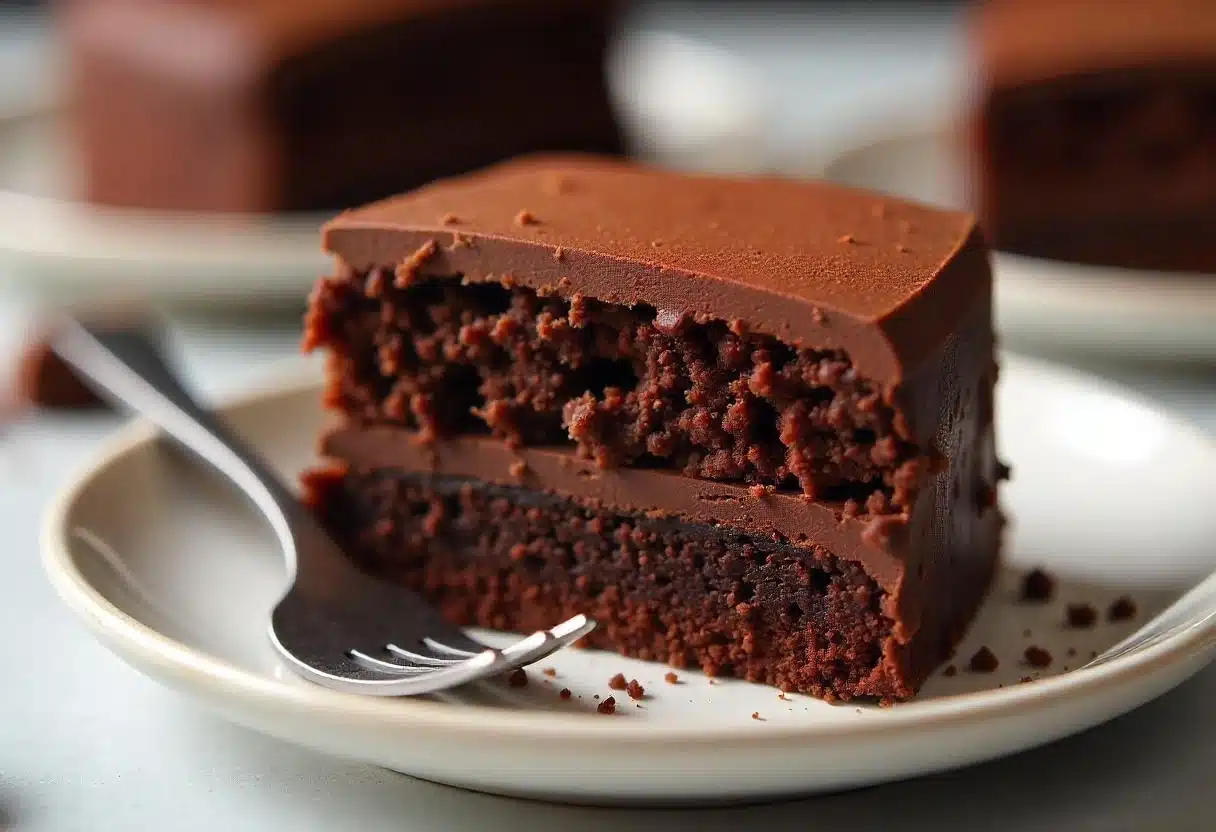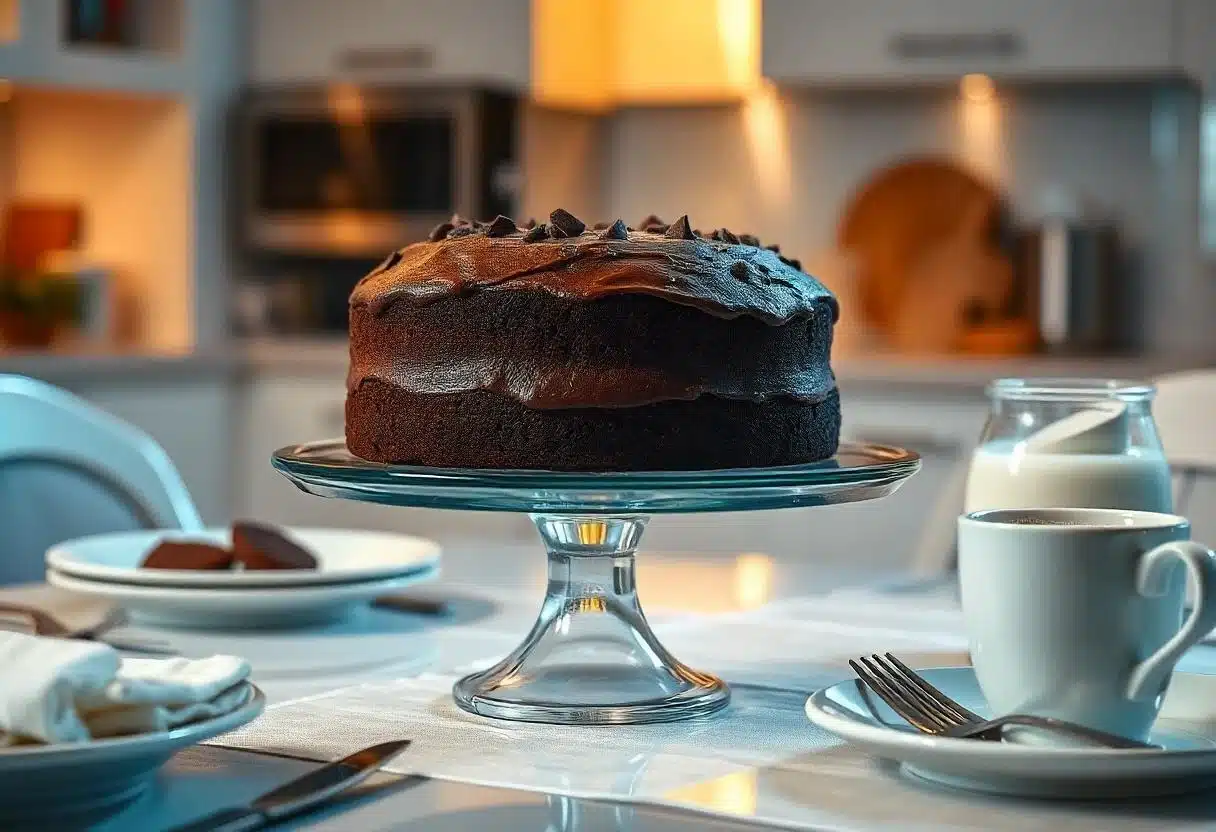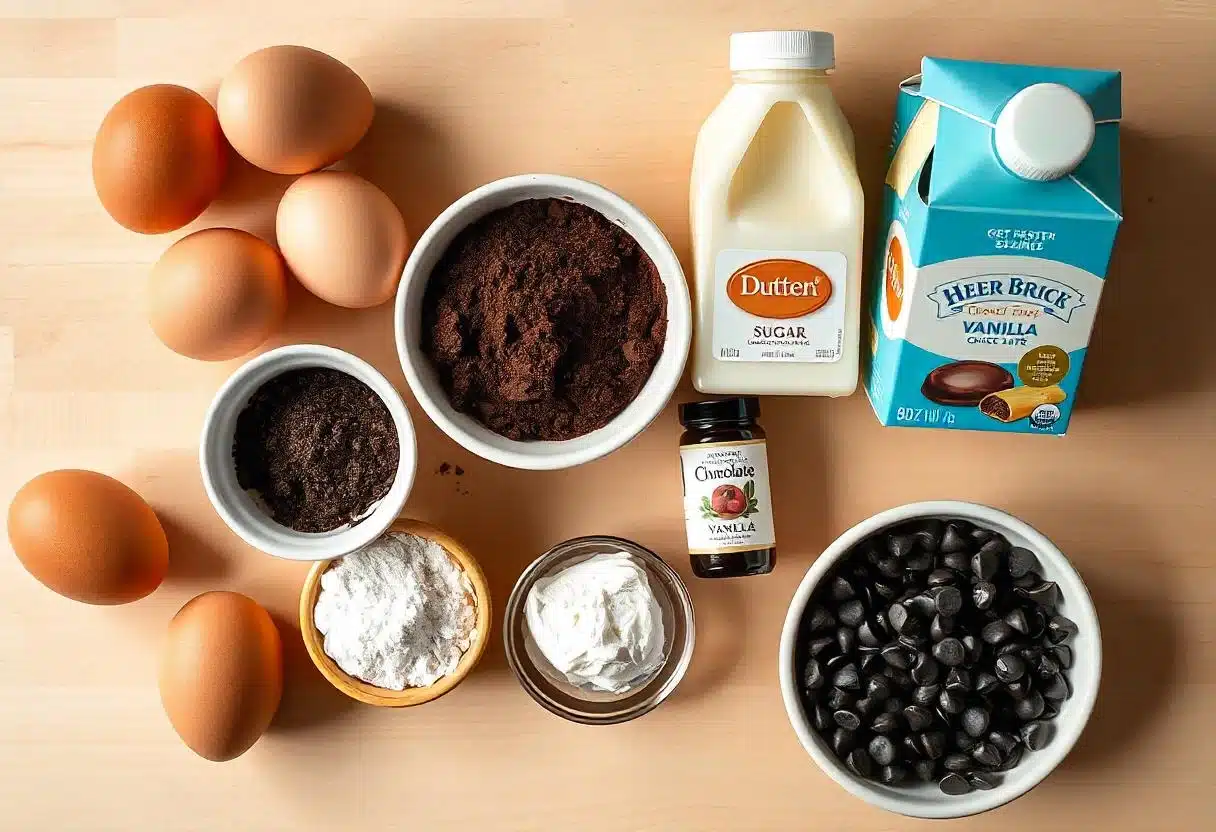Okay, amici, let’s talk chocolate cake! Because honestly, is there anything more heartbreaking in the kitchen than pulling out a beautiful chocolate cake only to find it’s dry? Mamma mia, it’s the worst! We dream of that rich, decadent, perfectly moist slice that makes you close your eyes and just sigh. My husband still remembers a certain “chocolate brick incident” from early in our marriage (we learn, we grow, right?).
But guess what? That dream of a super moist chocolate cake? Totally achievable! It’s not some secret guarded by fancy pastry chefs. It’s about understanding a few key things and using some simple tricks I’ve picked up along the way. So, grab your apron, maybe put on some music (I find Sinatra helps!), because we’re diving into how to keep chocolate cake moist . You absolutely can do this!
Alright, let’s get into the delicious details!
Understanding Moisture & The Role of Ingredients
Understanding Moisture: What Makes Cakes Dry?
So why do some cakes end up drier than my garden in August if I forget to water? It usually boils down to moisture loss. The biggest culprit? Overbaking! Leaving that cake in the oven just a few minutes too long literally bakes the moisture right out. Sad, but true! Other suspects include not having enough fat (fat = moisture’s best friend!), using the wrong kind of flour, or even just measuring ingredients a bit carelessly. Sometimes even your oven’s mood or the weather can play a part! But don’t worry, we can outsmart these moisture thieves.
The Role of Ingredients: Your Moisture Dream Team
Think of your ingredients like the Avengers assembling for moisture! Each one has a superpower. Eggs bring liquid and richness (those yolks!). Butter and oil (our fats) make the cake tender and trap moisture like little bodyguards. And sugar? Surprise! It’s not just for sweetness; it actually grabs onto water molecules and holds them tight, keeping the cake moist longer. It’s all about teamwork and balance! Want to know more about the 5 main ingredients in cake? It helps understand the basics!
Choosing the right fat is important too. Curious about butter vs. margarine? Check out Mary Berry’s thoughts on using butter in cakes – she knows her stuff!
Okay, let’s get practical with some tips!
Tips for Moisture, Liquid Gold & Sweet Additions
Tips for Moisture: How to Retain Moisture While Baking
Let’s talk strategy for keeping that moisture locked in! First, be a clock-watcher (in a good way!). Start checking your cake a few minutes before the recipe says it’s done. Use that toothpick test – you want moist crumbs, not a bone-dry stick! Second, line your pans with parchment paper. Seriously, it helps prevent the edges from getting too dark and dry. Third, consider moisture-boosting ingredients like buttermilk, sour cream, or plain yogurt in your recipe – they add tenderness and tang! It’s all about setting your cake up for success right from the start. Need help with parchment? Sally’s Baking Addiction has a great guide on using parchment paper rounds.
Liquid Gold: Choosing the Right Liquids
What liquid goes into your batter matters! Milk is fine, classic even. But for chocolate cake? Hot coffee or espresso is a secret weapon! You don’t really taste the coffee, but it makes the chocolate taste intensely chocolatey and adds moisture. Mamma mia! Buttermilk is another fantastic choice – its acidity reacts with baking soda for a tender crumb, and it adds great moisture and a subtle tang. Don’t be afraid to swap out plain milk for one of these liquid gold options!
Sweet Additions: Syrups and Soaks
Your beautiful cake is baked! Now what? Think of it like a thirsty sponge. While it’s still warm (not hot!), you can brush it with a simple syrup – just equal parts sugar and water simmered until the sugar dissolves, then cooled slightly. Maybe add a splash of vanilla or even Kahlua for grown-up cakes! It soaks right in, adding extra moisture and flavour. Glazes also work wonders, sealing the top and adding deliciousness. These finishing touches are like a spa treatment for your cake! Need a basic recipe? Here’s a great simple syrup recipe.
Baking Secrets, Prevention & Post-Baking Techniques
Baking Secrets: The Science of Chocolate Cakes
Let’s geek out for just a second! Did you know cocoa powder can actually be quite drying? That’s why many super moist chocolate cake recipes compensate with extra fat (like oil) or liquid (like buttermilk or coffee). Chocolate chips or chunks melted into the batter also add fat and moisture. It’s all a balancing act! Understanding how cocoa behaves helps you choose recipes designed for maximum chocolatey moistness. Science is delicious, right?
Prevention Over Cure: Ways to Avoid Dryness from the Start
Honestly, the easiest way to have a moist cake is… don’t let it get dry in the first place! Easier said than done sometimes, I know! But focus on the fundamentals: Measure your ingredients accurately (especially flour – spoon and level, don’t pack!). Make sure your oven temperature is correct (that oven thermometer is your friend!). And please, please, please don’t overmix the batter once the flour goes in! Gentle folding is key. Getting these basics right is like building a strong foundation for a moist cake!
Post-Baking Techniques: How to Store Chocolate Cake
Okay, cake’s baked, cooled, maybe even frosted. How do you keep that glorious moisture locked in? Storage, my friends! Once completely cool (and I mean completely !), wrap it well. Plastic wrap is your best friend here – wrap it snugly. Then, pop it into an airtight container. This is your moisture fortress! Storing it in the fridge can actually help keep some cakes moist longer, if they are wrapped super well to prevent drying out and absorbing weird fridge smells (blech!). Just remember to bring it to room temp before serving for the best flavour and texture!
Let’s tackle some cake emergencies and pro tips!
Re-moisturizing Tricks, Professional Insights, Ingredient Upgrades & Common Questions
Re-moisturizing Tricks: Reviving Dry Cakes
Uh-oh. Despite your best efforts, the cake is a little…sad and dry. Don’t despair! We can try some cake CPR. If it’s just slightly dry, that simple syrup trick (brushing it on) can work wonders. Another quick fix? Pop a slice on a plate, cover it loosely with a damp paper towel, and microwave for just 10-15 seconds. The steam helps! Or, embrace it – cube it up for a trifle, crumble it for cake pops, or toast slices and serve with ice cream and chocolate sauce. Sometimes a delicious transformation is the best fix!
Professional Insights: What Bakers Do Differently
What are those bakery ninjas doing? Often, it’s precision and specific techniques. Many pros weigh all their ingredients (grams don’t lie like cups sometimes do!). They might use the “reverse creaming” method (mixing fat into dry ingredients first) for ultimate tenderness. They definitely use high-quality ingredients. And yes, that simple syrup trick is common! It’s about consistency and knowing exactly how ingredients behave.
Ingredient Upgrades: Unique and Premium Ingredient Choices
Want to really elevate your chocolate cake? Splurge a little! Use high-quality Dutch-process cocoa powder for a deeper, richer flavour. Use good quality dark chocolate (not just chips) if the recipe calls for melted chocolate. Add a teaspoon of instant espresso powder – it makes chocolate taste more chocolatey! Swap some white sugar for brown sugar for extra moisture and a caramel note. These little upgrades make a big flavour impact!
Common Questions: How to Avoid Dryness in the Future
Let’s hit those common queries head-on:
Can You Salvage a Dry Cake?: Step-by-step solutions for salvaging cakes that turn out dry.
Yes, absolutely! Here’s a quick plan:
Let’s troubleshoot and get you baking!
Troubleshooting, Recipes for Success & Variations
Troubleshooting Guide: Common Mistakes to Avoid
We all make ’em! Common culprits for dry cake: Overmixing (especially after adding flour – be gentle!), overbaking (use that timer and toothpick!), incorrect oven temp (get a thermometer!), or using the wrong size pan (thinner cake = dries out faster). Not cooling properly before frosting can also mess with texture, sometimes making it seem dry later. Remember these and learn from any oopsies! Check out my guide on the secret to super moist cake for more troubleshooting.
FAQs
Let’s tackle those quick questions!
How do you keep chocolate cake from drying out?
How do I make my cake more moist?
What do bakers put on cake to keep it moist?
How to make chocolate cake less dry?
So, there you have it, amici! The secrets are out! Keeping your chocolate cake moist and delicious isn’t about some impossible magic; it’s about understanding the ‘why’ behind the steps and using a few smart techniques. Pay attention to your ingredients, be gentle with mixing, watch that oven timer like a hawk, and store it right!
Don’t be afraid to experiment! Baking is supposed to be fun (even when flour ends up everywhere, like in my kitchen usually!). Every cake is a learning experience. So go bake with confidence, share the chocolatey love, and enjoy every single moist, delicious bite. Curious about what the most delicious cake in the world might be? Well, a perfectly moist chocolate one is definitely a contender! Buon appetito!




Leave a Reply